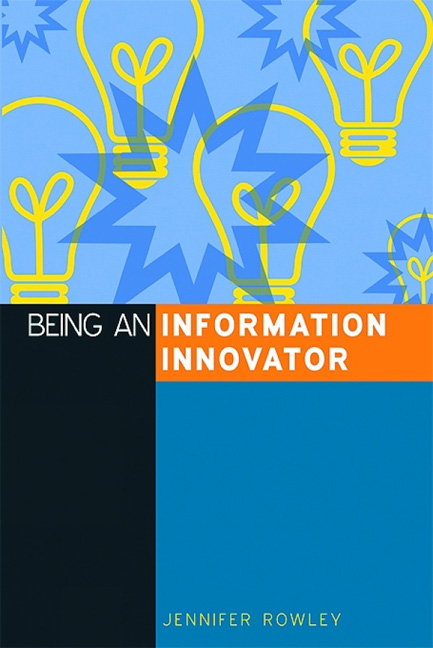5 - Innovation in practice
Published online by Cambridge University Press: 08 June 2018
Summary
Learning objectives
After reading this chapter you should be able to:
• Plan an innovation strategy, taking into account the specific stages in an innovation project, including the stages of idea generation and opportunity identification, concept testing and development and implementation.
• Consider approaches to capitalizing on the potential of input from customers and users as innovators.
• Appreciate the value of, and challenges in, open innovation and collaborative innovation and the role of networks and partnerships.
• Discuss and reflect on the relationship between innovation, knowledge and learning and its consequences for the contribution of information organizations to innovation beyond the information organization.
Introduction
This chapter draws together some of the important practicalities of innovation processes in organizations. The first section, on the innovation project, revisits the idea of a stage model of innovation introduced in Chapter 2, and further develops discussion on how specific innovation projects can be facilitated, managed and led. This is followed by two sections that focus on the involvement of customers and users in innovation and on capitalizing on resources from outside the organization, through networks and partnerships. Finally, a discussion of the relationship between innovation and knowledge and learning proposes a wider agenda for the involvement of information organizations in innovation in the public sector and beyond.
The innovation project
Innovations that have the potential to make a significant impact on the organization, either in terms of business and organizational processes, or in terms of the products and services that they deliver to the marketplace, require a managed process. Such a process plays an important role in managing the allocation and deployment of resources, in sequencing and timing of activities, and in communication between all stakeholders. Chapter 2 introduced the idea of an n-step model of the innovation process, and offered three different models of the process proposed by three different authors. In practice, there is such a wide variation in types and scales of innovation, as well as in the organizational contexts in which innovation takes place, that the steps in an innovation process need to be tailored to the innovation. It is important, however, that all innovation process models embed decision points between each stage. So, for example, after idea generation, and prior to feasibility analysis, there must be a decision as to which ideas to take forward to feasibility analysis.
- Type
- Chapter
- Information
- Being an Information Innovator , pp. 141 - 186Publisher: FacetPrint publication year: 2010



